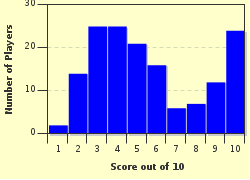Quiz Answer Key and Fun Facts
1. Norwich was founded by the Romans.
2. In 1096 the Normans moved the East Anglian diocesan see to Norwich. Where was the original Anglo-Saxon cathderal?
3. For a period of about 250 years Norwich was the biggest city in England after London. Approximately when was this?
4. How many medieval churches does the former walled area of Norwich contain (in addition to the cathedral)?
5. In the 16th century Norwich acquired a sizeable foreign population. Who were they?
6. In the English Civil War Norwich supported Parliament.
7. Which of these people was NOT born in Norwich?
8. From 1850-1910 Norwich was economically depressed. What was the most important reason for this?
9. The University of East Anglia (Norwich) was founded in the 1920s as a living war memorial with a practical, forward-looking purpose.
10. In World War II some members of the British armed forces wrote the mysterious inscription NORWICH on letters and even postcards to their wives or girlfriends. What on earth did this mean?
Source: Author
bloomsby
This quiz was reviewed by FunTrivia editor
gtho4 before going online.
Any errors found in FunTrivia content are routinely corrected through our feedback system.

